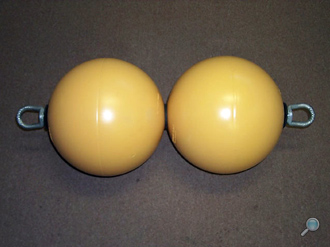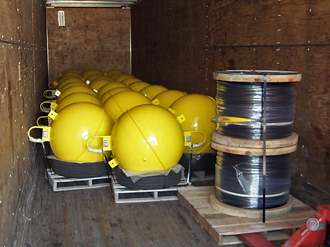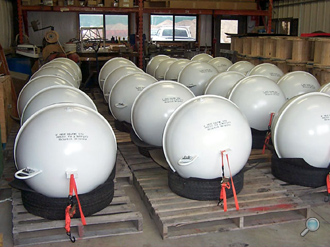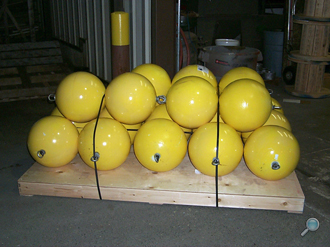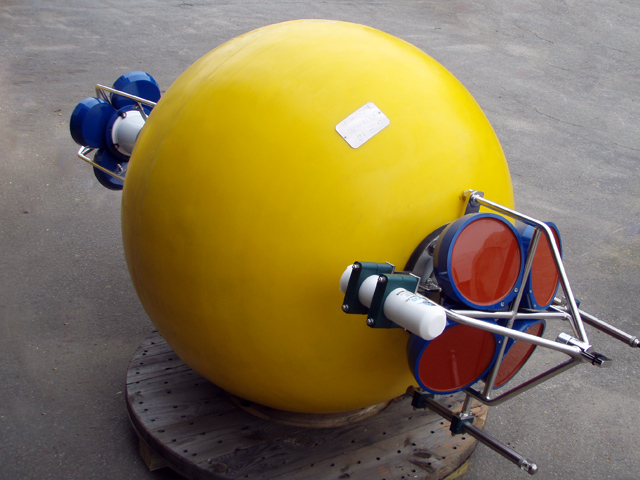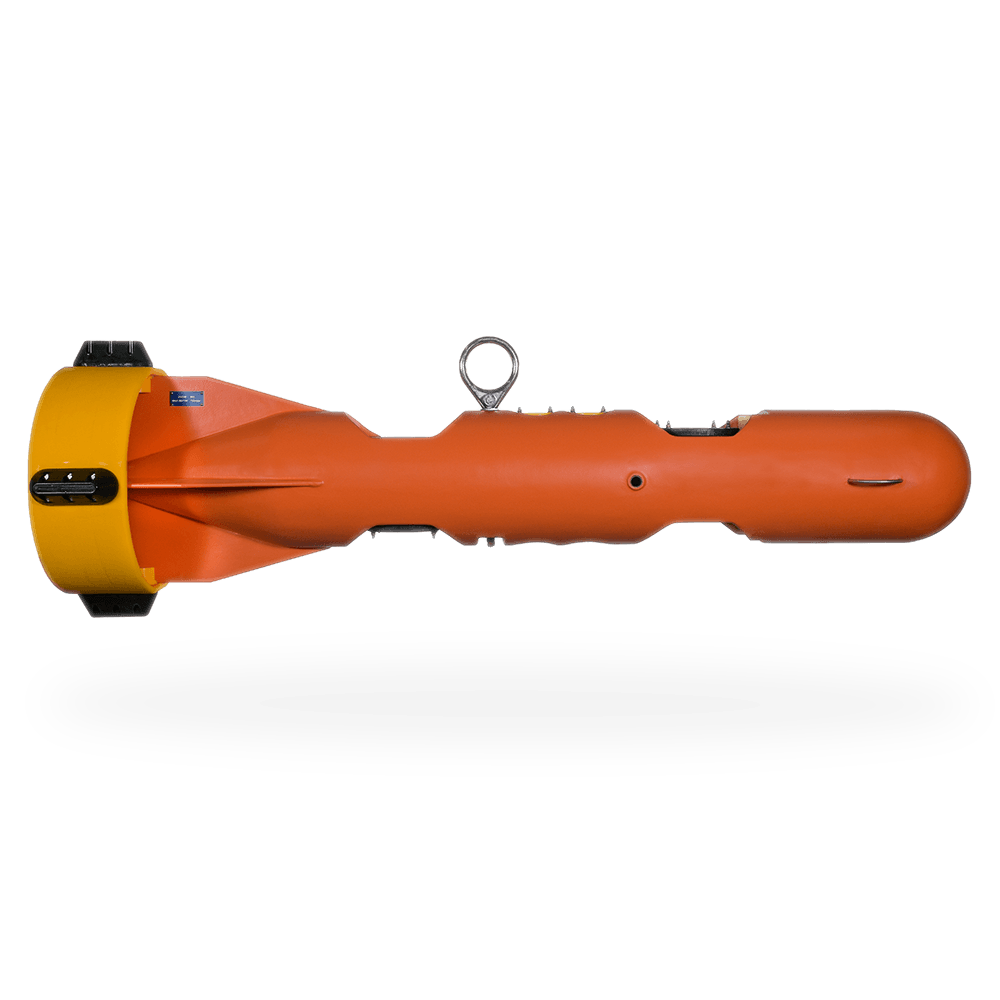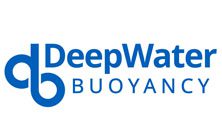BlueZone partners with over 50
world-leading original equipment
manufacturers and systems providers
Mooring Systems Subsurface Floats
PLASTIC SUBSURFACE FLOATS
Mooring Systems, Inc. utilises plastic commercial fishing floats for use in a variety of instrument mooring applications. Configurations include; subsurface mooring flotation, instrument frame buoyancy, and pop-up recovery buoys for bottom mounts. The basic configuration of placing floats in series on a single strength member provides an inexpensive buoyancy alternative in relatively shallow water applications. Galvanized steel strength members and shackle attachment eyes provide 5,000 pounds of strength. Neoprene washers are used to protect the plastic when secured tightly on the steel rod. Floats are available in single double or triple assemblies.
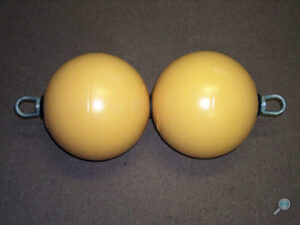
STEEL SUBSURFACE FLOATS
Mooring Systems, Inc. manufactures steel flotation spheres for use in shallow-water oceanographic mooring applications. Steel spheres have been in use for over 30 years and continue to provide benefits to oceanographers and marine engineers for long-term deployment of instrumentation and sample collection apparatus. Steel floats are larger in volume than alternative plastic and glass floats, providing greater buoyancy per float. This advantage translates to better mooring performance as fewer floats for the same given buoyancy will result in lower drag.
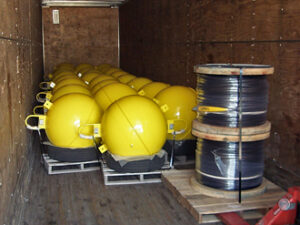
Contact the sales team at BlueZone for more information on Mooring System’s subsurface floats.
Key Features
Up to 25-hour mission duration
Speeds up to 4.2 knots
Increased module payload capacity
Search and recovery
Hydrography
Deep sea mineral exploration
Marine & Fisheries research
Product Enquiry
Related products
Mooring Systems, Inc. manufactures spherical shaped subsurface buoyancy for ADCP buoy applications with integral stainless steel instrument mounting frames, or with single strength members for use as primary or back-up...
Read moreDeepwater Buoyancy StableMoor® Mooring Buoys
Specifically engineered for high current applications, the StableMoor® is designed to reduce drag and increase mooring stability in extreme flow regimes. By decreasing frontal area (compared to our standard spherical...
Read moreDeepWater Buoyancy is the world leader in the design and manufacture of deployment products for use with ADCP's.
Read moreRelated Articles
Ahead of the Tide: A Year of Milestones and Momentum- A Letter from the Director
By Neil Hodges, Managing Director, BlueZone Group As 2025 draws to a close, it’s a moment to reflect on a year that has been nothing short of transformative for...
Read MoreGlobal Journeys, Fresh Faces and Capability Growth That Sets the Stage for the Future For BlueZone Group, 2025 has been nothing short of transformative — a year defined by...
Read MoreSafer Summers: Innovation Beneath the Waves with ArtemisSAR and StarFish
The Advanced Sonar Systems Giving Surf Life Savers the Tools to Protect Lives with Greater Speed, Safety, and Confidence As we turn the page into Aussie summer, the rhythm...
Read More
